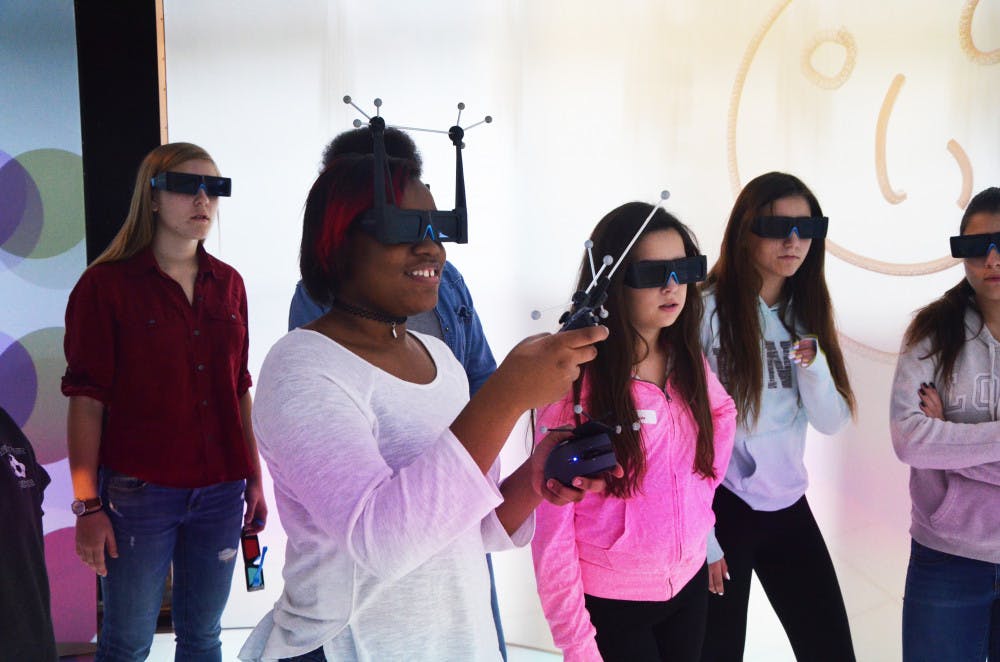The YURT Ultimate Reality Theater was officially unveiled last semester, and after six months of use, the possibilities for the facility seem limitless, said David Laidlaw, professor of computer science and principle investigator for the YURT.
The virtual reality theater — which has been called the most advanced of its kind in New England by the Boston Globe — features a 360-degree display, high pixel density and crisp resolution, creating images viewable with 3D glasses, Laidlaw said.
“It’s all meant to be at the very limits of our visual acuity. If it were any better than it is, you wouldn’t even know,” because your eyes would not be able to register the difference, said Jesse Polhemus, communication and outreach specialist for the Department of Computer Science.
The number of environments and applications the YURT can have is boundless. The YURT has already been used by Professor of Literary Arts John Cayley to study “ambient poetics” in 3D audiovisual environments, according to Cayley’s faculty page.
“The YURT lets people manipulate text in a way you really can’t with modern computers and technical methods. You could, for example, put yourself in the center of a blank sheet of paper and assemble text around you,” Polhemus said.
The YURT has amazed those who have had the opportunity to step inside. Joey Botros ’16, a co-coordinator of Brown Science Prep, a weekly high school tutoring program, was able to get access to the YURT for a group of high school students in the program. During their time in the YURT, students were able to “stand on the surface of Mars, closely observe an ancient tapestry in fine detail, create our own drawings in 3D space, step into the right atrium of a human heart and even play Minecraft,” Botros said.
“The moment you put on the 3D glasses and enter the YURT, it’s like stepping into another world. When the YURT generated its visualization of Mars, it felt like we were actually standing on the surface of another planet,” Botros said.
Research is best facilitated in areas with large bodies of data, Laidlaw said. This is being done with planetary geology, where “petabytes of data (are) showing what Mars looks like,” he added.
The YURT could be used to study geography, engineering fluid dynamics and archaeology, Polhemus said.
The YURT will also facilitate research that explores topics such as the necessity of virtual reality and the value of facilities like the YURT, Laidlaw said, adding that this research will help with future virtual reality technology.
Even though the YURT is open and being used by both faculty and students, it is still being tweaked, Laidlaw said.
“Blending all of the projector images into one seamless one is still not as good as I would like it,” he added.
The YURT was built with a $2 million grant from the National Science Foundation and $500,000 from the University, the Boston Globe reported. In building the YURT, the team “pioneered multiple sciences,” such as metallurgy and optical science, Polhemus said.
“It really was just an amazing journey,” he added. “I’m just very proud of the fact we have undertaken something this transformational here.”





